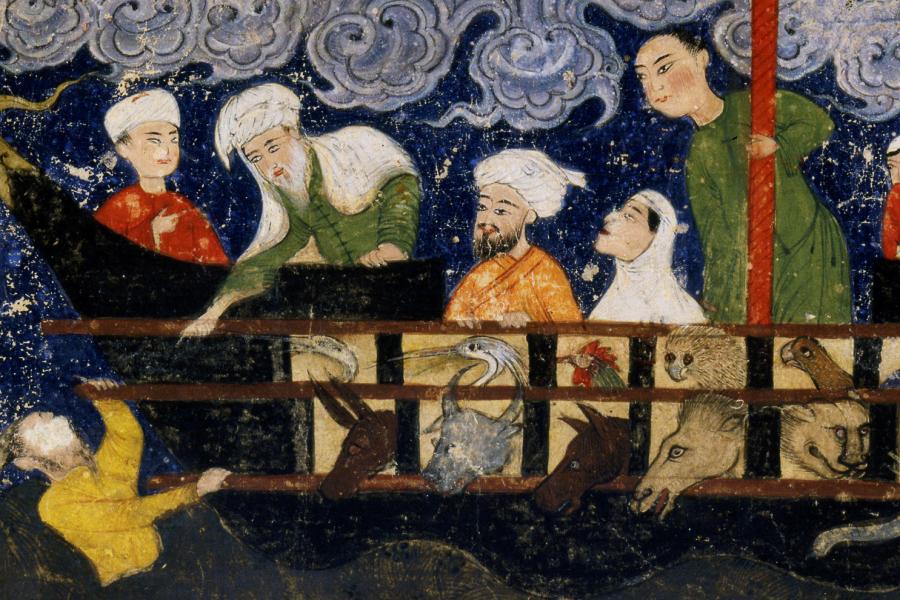How does this encounter make you feel?

Animals and birds escape the flooding water with Noah and fellow-believers ,
c. 1425
-
Bright emotions
-
Not at all Extremely
-
-
Quiet emotions
-
Not at all Extremely
-
-
Heavy emotions
-
Not at all Extremely
-
-
Sombre emotions
-
Not at all Extremely
-
Compare yourself to others
Choose different variables below, and see the patterns of response reflected in the circle of emotion above. Your responses are the coloured wedges. Others' responses are averaged in the spider graph of lines and dots.

Date: c. 1425
Creator of the image: Hafiz-i Abru and an unknown artist Date of the image creation: c. 1425 Medium: Paint on manuscript leaf Persons depicted: Noah, his family, and a small group of believers This Persian manuscript image from the period of the Timurids, depicts Noah, his fellow believers, and assorted animals and birds, aboard the ark. Amongst the unbelievers, and therefore not on the Ark, was Noah’s son. In this image, Noah’s son clings to the side of the Ark, desperately trying to save himself from the flood-waters, as Noah calls out to him: ‘O my son! embark with us and be not with the unbelievers’. The son replied: ‘I will betake myself to some mountain, it will save me from the flood’. And Noah said: ‘This day nothing can save you from what God has decreed, for only those on whom He has Mercy will be saved’. And the waves came between them and the son was among the drowned ones.” (Holy Qur’an, 11: 42–43) The David Collection of Islamic Art, which currently holds the manuscript, describes this image of Noah’s Ark as such: ‘The style of the manuscript’s miniatures is slightly old-fashioned compared with the otherwise refined Timurid painting, but the scene on the stormy sea is quite dramatic, with the fluttering sail, the ark breaking out of the picture frame, and the swollen bodies. The animals that are to populate the earth are rendered both humorously and fairly realistically.’ Hafiz-i Abru was a Persian historian working in the Central Asian court of Timur’s son, Shah Rukh (1405–1447). Timur was a great conqueror who married a Mongol princess descended from Genghis Khan and went own to amass an enormous realm in a short period. From his capital of Samarkand, he conquered Iran, Iraq, and Afghanistan in 1370. Under the reign of the Timurids, the city Heart (now in Afghanistan) played a major role as an artistic centre. The Timurids were great patrons of the arts, sponsoring artistic workshops to costly manuscripts. These investments, along with some talented artists and interesting cultural fusions of Chinese characteristics with Islamic narratives, saw the fifteenth century became a famous for Persian painting. Shah Rukh ordered the Hafiz-i Abru to continue on a project documenting world history. This was partly motivated by a concern that the Timurids had with legitimizing their right to rule.